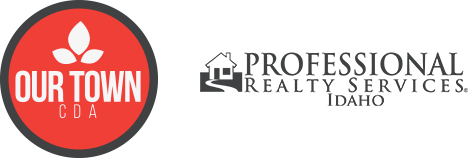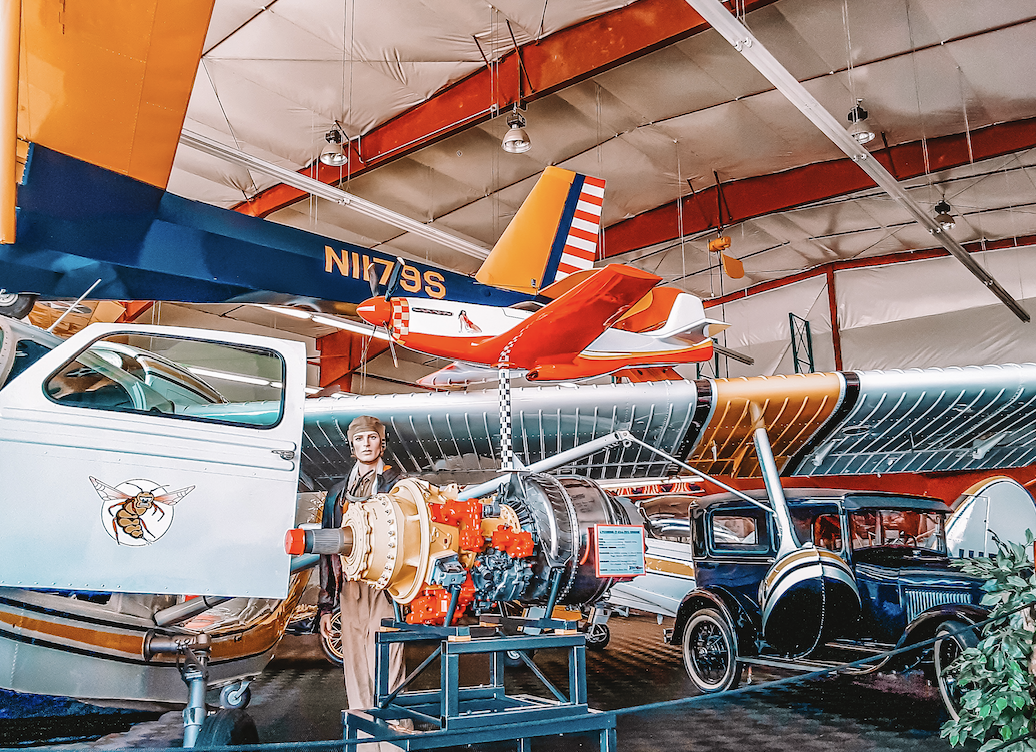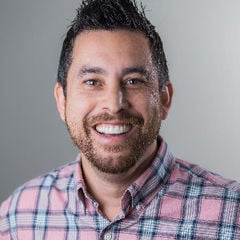Story & Photo By Dan Thompson | Article Provided by Coeur d’Alene Living Local
As she pointed out inventions, airplanes and photos spanning more than a century of United States history, Rachel Riddle Schwam found herself apologizing for mixing up the dates on a few displays at the new location of the Bird Aviation Museum and Invention Center.
The double-checking was understandable. There are a lot of dates for her to keep track of. Some items go back at least 150 years.
“You’ve got old airplanes, new airplanes, antique inventions to modern day inventions,” Schwam said the morning before the museum’s June 1 opening at the Coeur d’Alene Airport. “It’s a big learning environment of the history of the United States, so it’s a pretty awesome place.”
For nearly 12 years the Bird Museum called Sagle, Idaho, home. But now that home is at the end of West Cessna Avenue, in a large blue hangar with a door that opens to the airport tarmac. It is a fitting location for a museum with almost a dozen airplanes and a collection that celebrates, among other things, the history of flight in the United States.
At its previous home, up a curving road Schwam compared to the road up to Schweitzer Resort, the Bird Museum drew anywhere from 7,000 to 13,000 visitors annually. But it wasn’t open year-round, and it was a two-hour drive from Spokane.
With that drive cut in half, Schwam hopes more school groups and other visitors can more easily make their way to the free museum that was founded by her stepfather, Dr. Forrest Bird, who died at age 94 in 2015, two months before Pamela Riddle Bird, Rachel’s mother, died in a plane accident.
“It was mixed emotions,” Schwam said of the move. “I wanted to be able to continue what they started, but at the same time I knew space-wise we were condensing a little bit. But we’ve created displays that keep the same visual appearance and atmosphere of what it was (in Sagle).”
The main space in the new museum houses exhibits of all sorts. There is a corner devoted to World War II, and around the wall is a collection of photos and items highlighting the contributions of women in the history of flight. Adjacent to that is an area about space exploration, including a 15:1 model of the Hubble Telescope, and a framed Sandpoint, Idaho, T-shirt that went to space on the back of astronaut John Phillips.
The planes are in the center, flanked on one side by cases of model airplanes and on the other by dozens of artificial respirators, which Forrest Bird invented half a century ago. That includes the Bird Universal Medical Respirator he invented in 1958 and other smaller respirators he developed as well. For his work in that field, he was inducted into the National Inventors Hall of Fame in 1995.
High on the walls hang flags from countries around the world—some of which are no longer independent countries—that Forrest Bird would have hung up when he hosted international visitors to teach them about his respirators. He was careful to represent any guest’s home nation, Schwam said, by displaying its flag.
Another room of the museum honors inventors from the 1800s up through the 2000s: the inventors of cultural icons like Cabbage Patch Kids, Gatorade and Barbie, to that of telegraphs, ice resurfacers and fiber-optic cables.
The variety of inventions is purposeful and is geared toward one of the museum’s goals, which Schwam said is “to inspire youth and get them interested in math and science and aviation, and think outside the box and become future inventors.”
Bird was a lifelong pilot and served with the U.S. Army Air Corps in World War II. In 1946 he invented the first Positive Pressure Inhalation Device, which helped pilots breathe better at higher altitudes.
The museum first opened in Sagle in 2007, but in 2018 Schwam started planning the move south. By last January, she had secured a new space, so she oriented her large team of volunteers toward the job of relocating. That meant planes needed to be flown or shuttled and many one-of-a-kind artifacts needed to be packed up and brought down Highway 95. Even the floor—a series of black, plastic, mesh-like panels—needed to be taken apart and snapped back together.
All that movement happened between April 15 and June 1, when the museum officially reopened. Schwam said she plans to have a grander opening sometime in August or September.
“Everything you see here has been done by an amazing team of family, friends and volunteers,” Schwam said. “We had sent a couple memos out for help, and we got help when we asked for it. … Our new museum hangar neighbors have offered their help. Everybody has been very welcoming.”
Not everything from the previous site fit in this new one, but Schwam plans to rotate in items so that the entire collection gets displayed over time. Many of the items were either donated or are on loan.
Among the benefits of being in the new space, Schwam said, is that the museum can now keep regular hours. It will be open year-round Tuesday through Saturday from 9am to 3pm, a six-hour window she hopes will draw student groups. Already she has a number of groups booked for the fall.
The location is also easier for the airplanes on display, which can be flown in and better maintained at an airport.
“Sandpoint is a great aviation community, and Coeur d’Alene is as well,” Schwam said.
The museum does not charge an entrance fee, though it does request donations. It relies on those donations as well as the income from hosting private events. In the past it has hosted alumni events for local schools and universities, as well as at least one fly-in wedding. Those are opportunities Schwam said she’ll continue to pursue.
The move is bittersweet, Schwam said. Having lived in Sandpoint for 18 years, she said it was difficult to leave.
“One thing (my mother) always told me was to follow my own dreams and my own passions, and somebody said to me the other day that I’m coming out from behind their shadow, and so it’s emotional,” Schwam said. “But I am proud of what my family has done. My friends, coworkers, my volunteers, even my own children have made sacrifices. They helped put this floor together.
“As a family we’re here, and our volunteers have been with us so long, many of them are our family. … I am blessed that I have this awesome group of people.”


